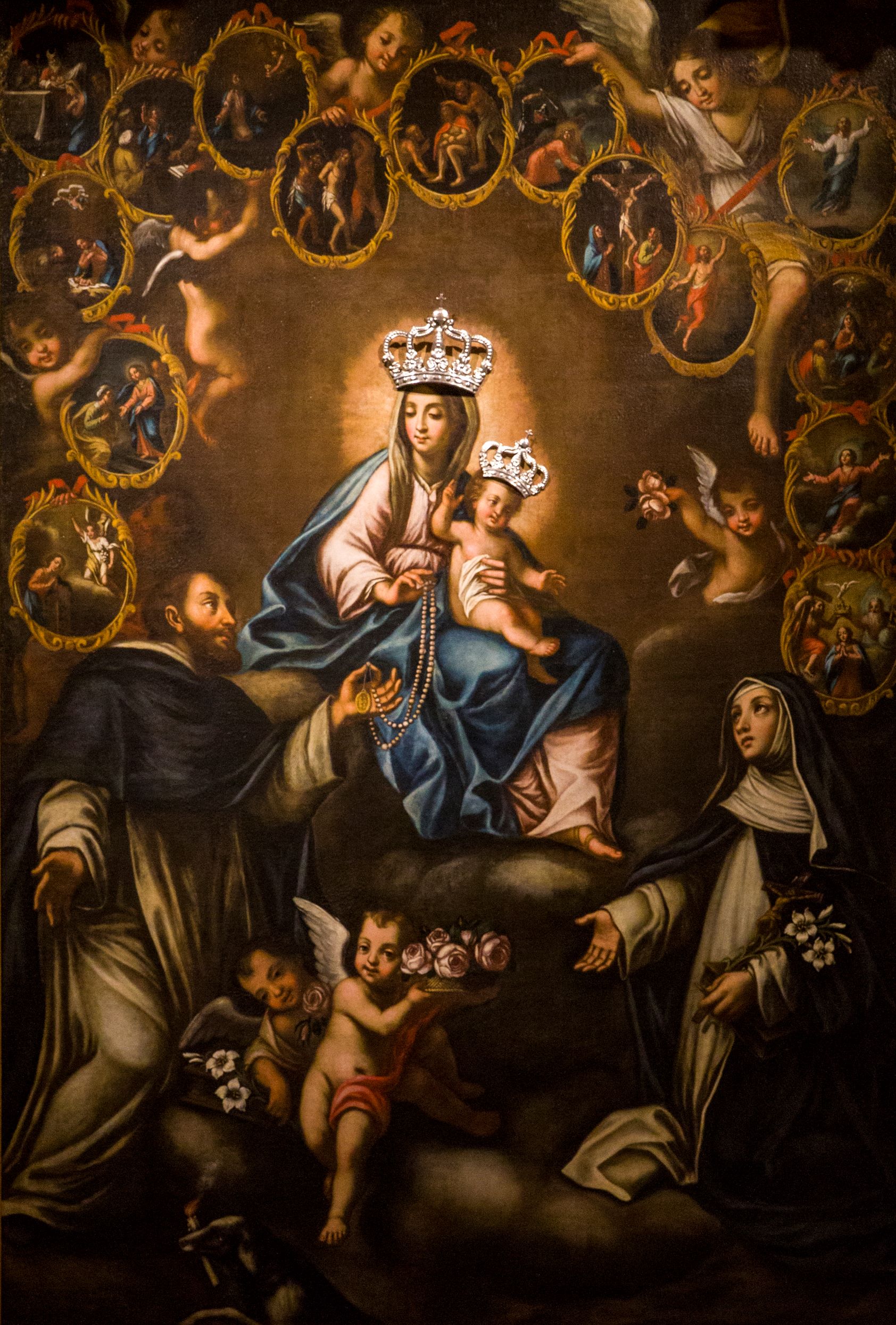
A Rose Among Thorns
The Third Reflection on the Painting of Our Lady of the Rosary in the Collegiate Church of St George, Ħal Qormi
“I grew tall like a palm tree in En-gedi,
and like rose-plants in Jericho;
like a beautiful olive tree in the field,
and like a plane tree I grew tall.I am the mother of fair love,
Sirach 24:14, 18–19
of fear, of knowledge, and of holy hope;
Come to me, you who desire me,
and eat your fill of my fruits.”
At the feet of Our Lady, we find two putti: one holding a basket full of roses, and the other holding a white lily—two flowers both associated with Mary. The lily, as described in relation to Saint Catherine of Siena, is a symbol of purity and virginity.
The rose is associated with Mary not only because of her beauty, but also because it is a symbol of hope, growing, as it does, among thorns. This association is ancient. We find it, among other places, in the Second Easter Song by the fifth-century poet Sedulius, who writes that just as a soft rose rises from sharp thorns, bearing nothing that harms, and outshining its mother in honour, so too Mary descends from the line of Eve (Carmen Paschale II, 28–31). Dante Alighieri, in Paradiso Canto 23, also praises Mary as “the rose in which the Word Divine became flesh” (vv. 73–74).
But the rose (rosa in Latin) is also connected to the origin of the word “rosary” (rosarium), which literally means “rose garden”. In certain medieval legends, each Hail Mary is likened to a rose, woven into a garland offered to Mary. And indeed, in this painting, the putto holding the basket appears to be receiving the roses that are being gently scattered from above by another putto who holds one of the medallions depicting scenes from the Mysteries. It is no coincidence that, in the hymn for Morning and Evening Prayer on the feast of Our Lady of the Rosary (7 October), the Church sings:
Come, all you nations, find, collect
bright roses from these mysteries,
and for this glorious Mother weave
a crown of pure and fairest love.
As Mary’s presence among us reminds us that God truly can draw roses from among thorns—even in our own lives—let us, through her intercession, pray for the grace that we too may spread the fragrance of Christ everywhere (see 2 Cor 2:15), so that, like her, we may draw souls to Him.



